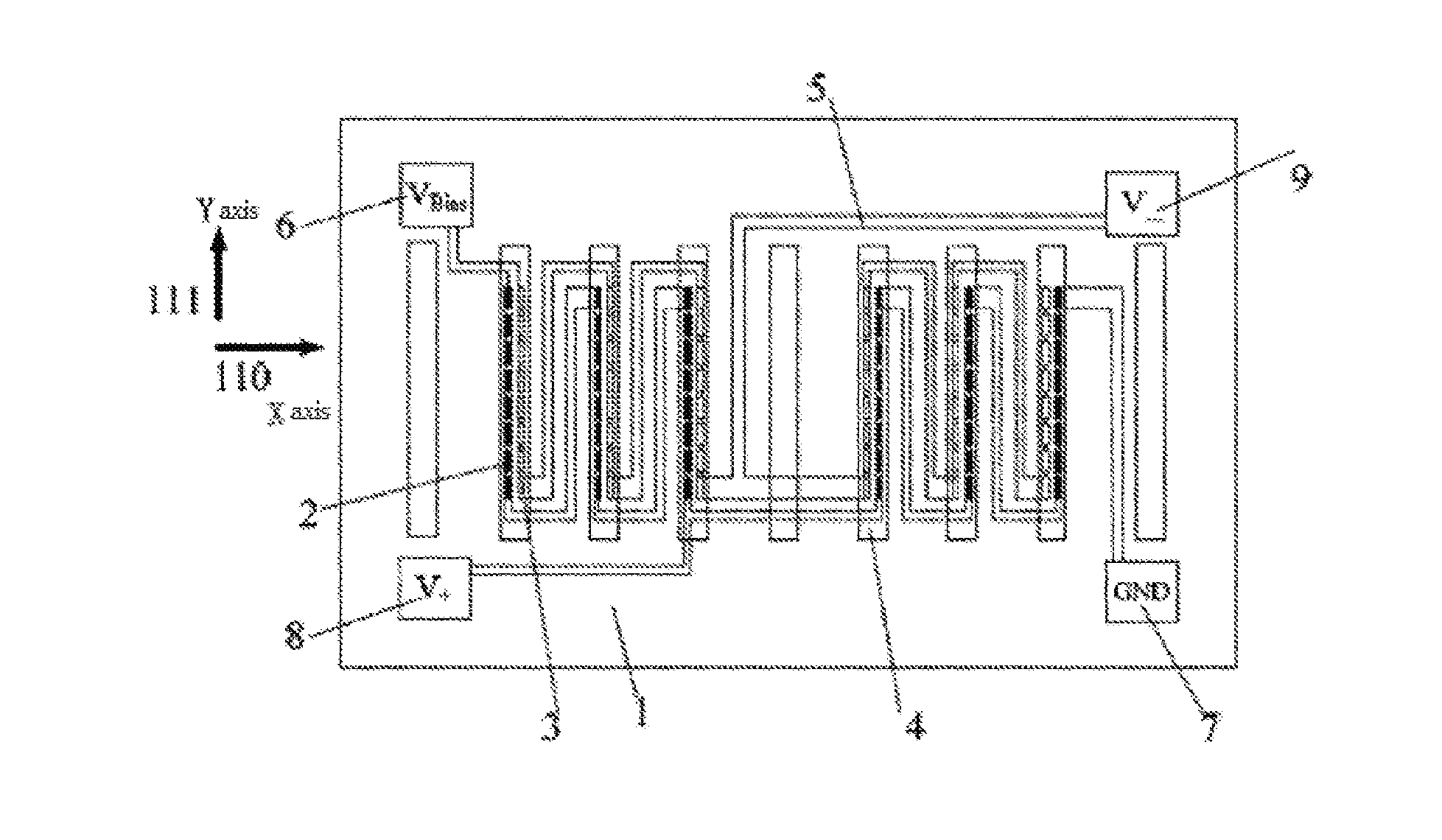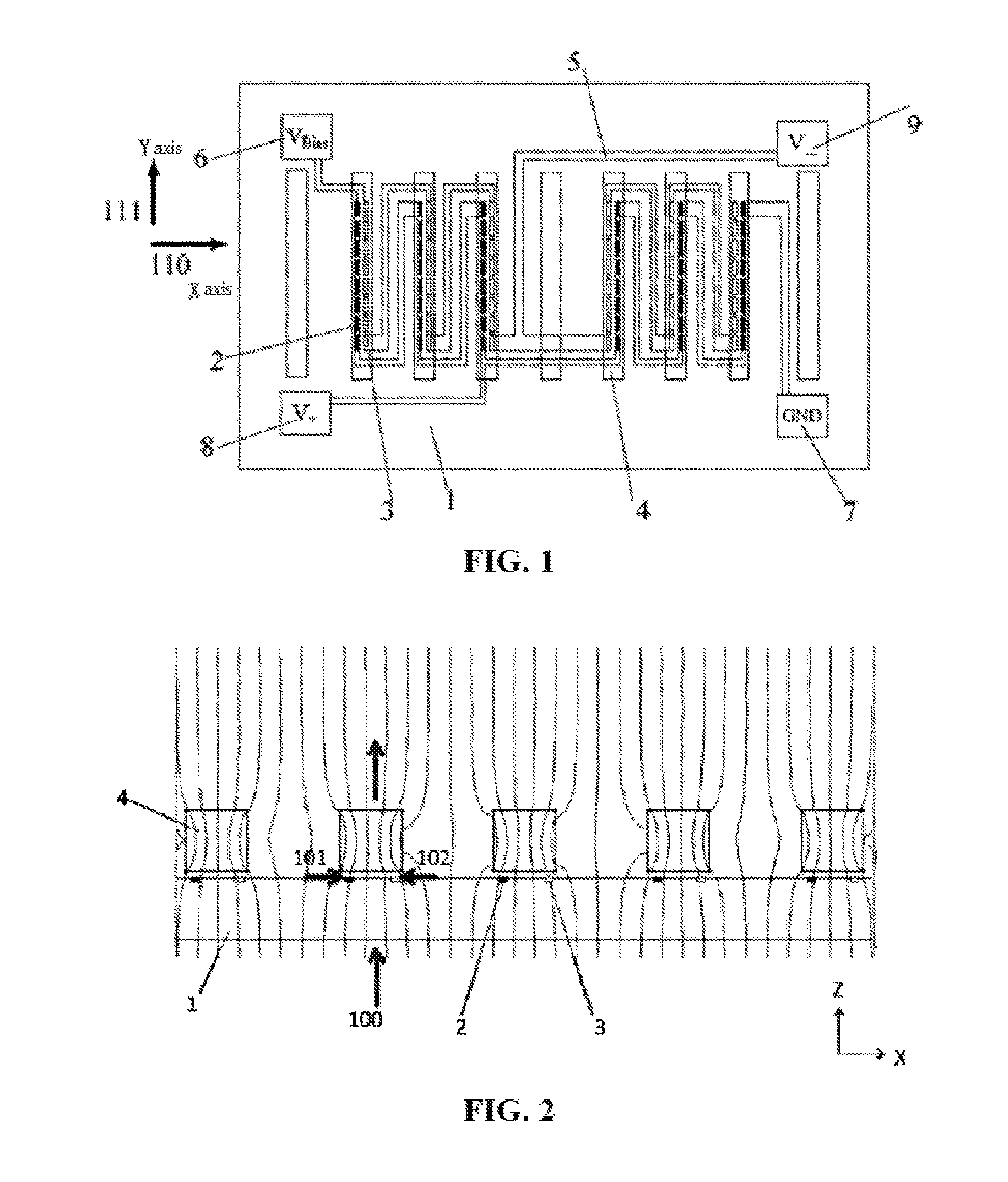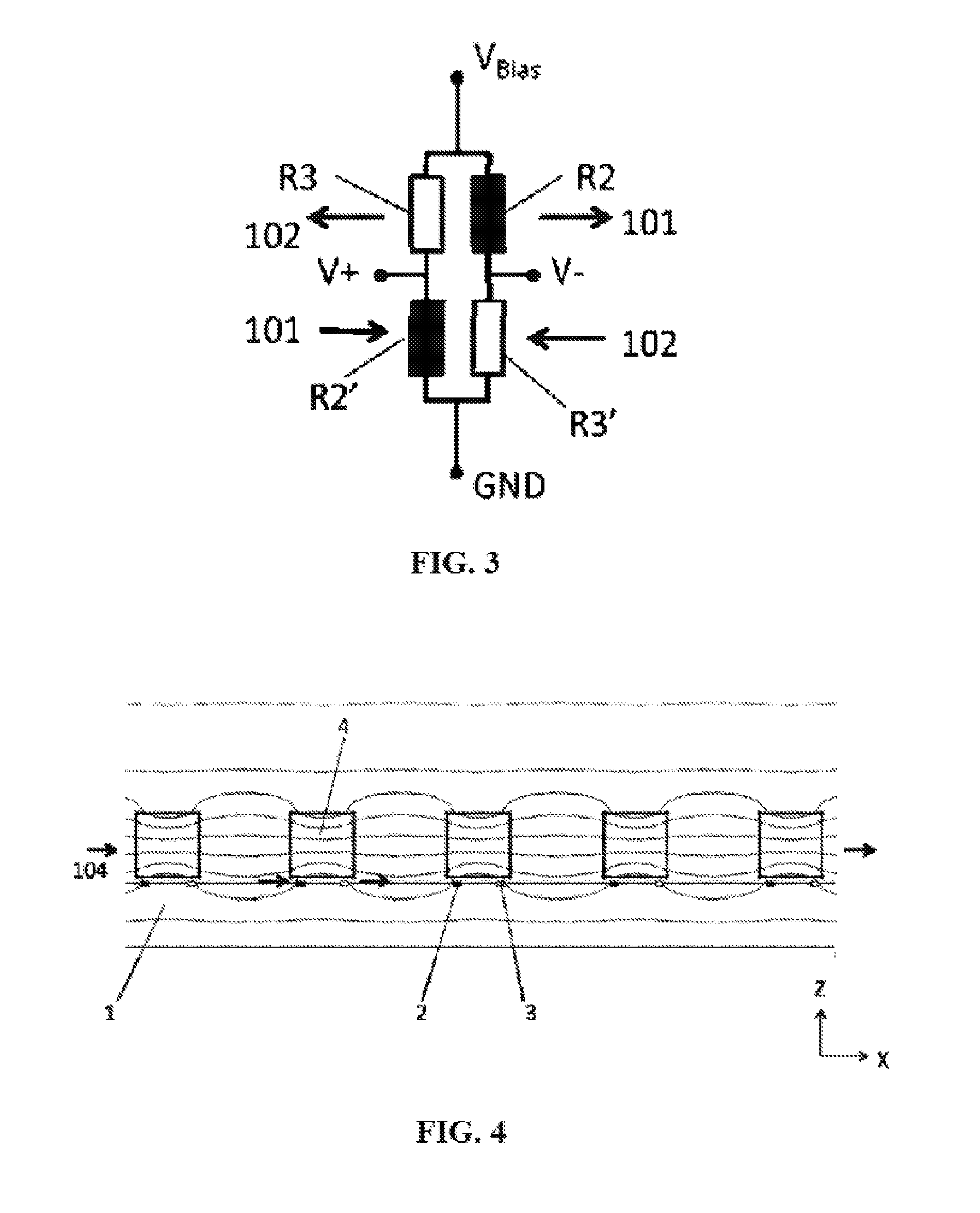Single-chip z-axis linear magnetic resistance sensor
a single-chip, magnetoresistive sensor technology, applied in the field ofsensors, to achieve the effect of low cost, high sensitivity and small volum
- Summary
- Abstract
- Description
- Claims
- Application Information
AI Technical Summary
Benefits of technology
Problems solved by technology
Method used
Image
Examples
embodiments
[0049]FIG. 1 is a schematic structural view of a single-chip Z-axis linear magnetoresistive sensor of the present invention. It can be seen from FIG. 1 that, the sensor includes a substrate 1, a plurality of magnetoresistive sensing elements 2 and 3, a plurality of flux guides 4, electrically connected conductors 5, and solder pads 6-9. The solder pads 6-9 respectively serve as a power supply terminal VBias, a ground terminal GND, and voltage output terminals V+ and V−. The magnetoresistive sensing elements 2 and 3 are respectively located on two sides of the long axis beneath the flux guides 4, and the flux guides 4 can cover all the magnetoresistive sensing elements completely. Of course, the magnetoresistive sensing elements 2 and 3 can also be respectively located outside of the edges on two sides of the long axis beneath the flux guides 4. In this embodiment, although the magnetoresistive sensing elements are not placed beneath the three flux guides at the outmost of the left a...
PUM
 Login to View More
Login to View More Abstract
Description
Claims
Application Information
 Login to View More
Login to View More - R&D
- Intellectual Property
- Life Sciences
- Materials
- Tech Scout
- Unparalleled Data Quality
- Higher Quality Content
- 60% Fewer Hallucinations
Browse by: Latest US Patents, China's latest patents, Technical Efficacy Thesaurus, Application Domain, Technology Topic, Popular Technical Reports.
© 2025 PatSnap. All rights reserved.Legal|Privacy policy|Modern Slavery Act Transparency Statement|Sitemap|About US| Contact US: help@patsnap.com



